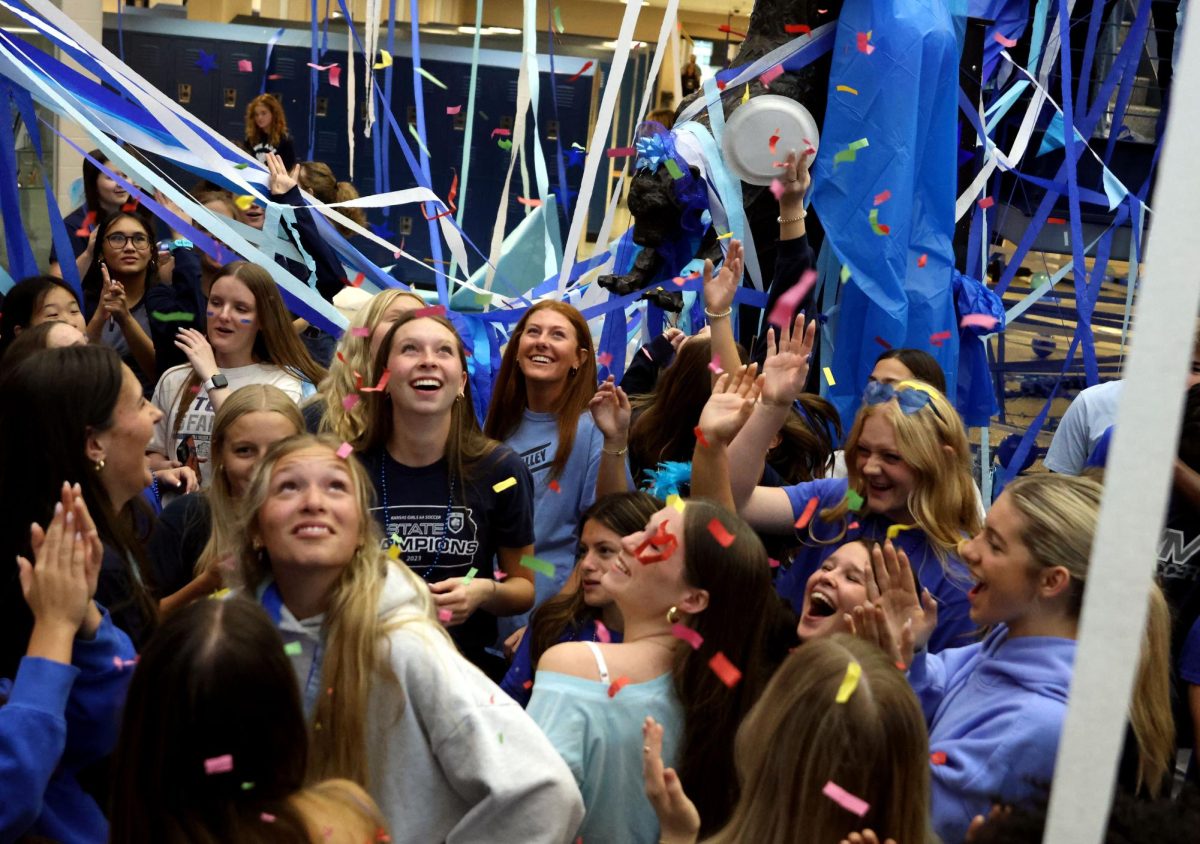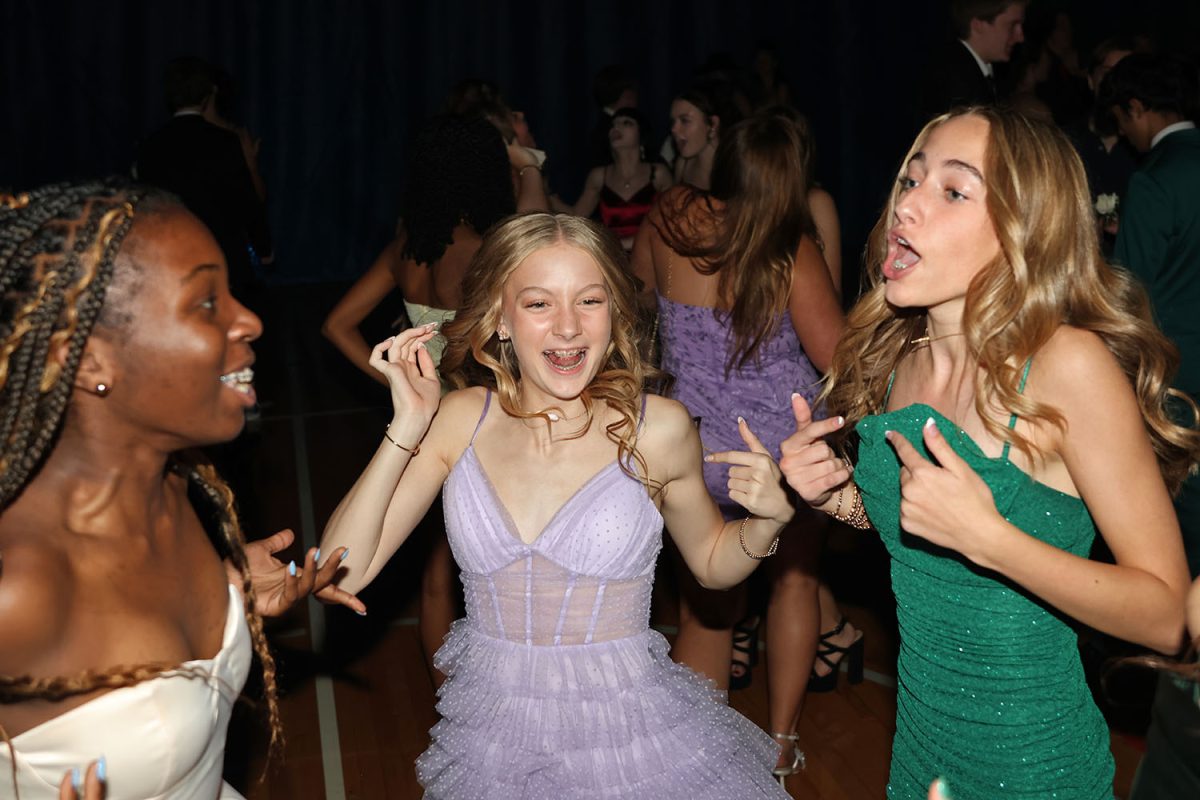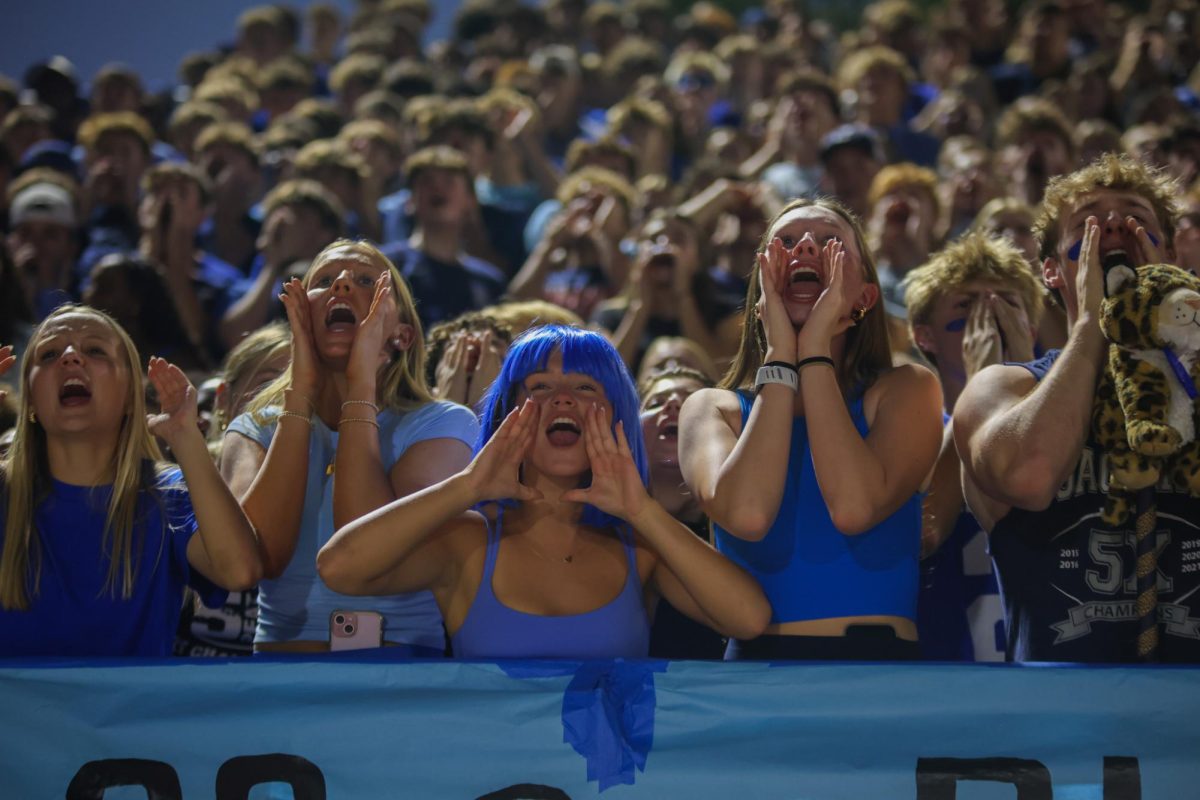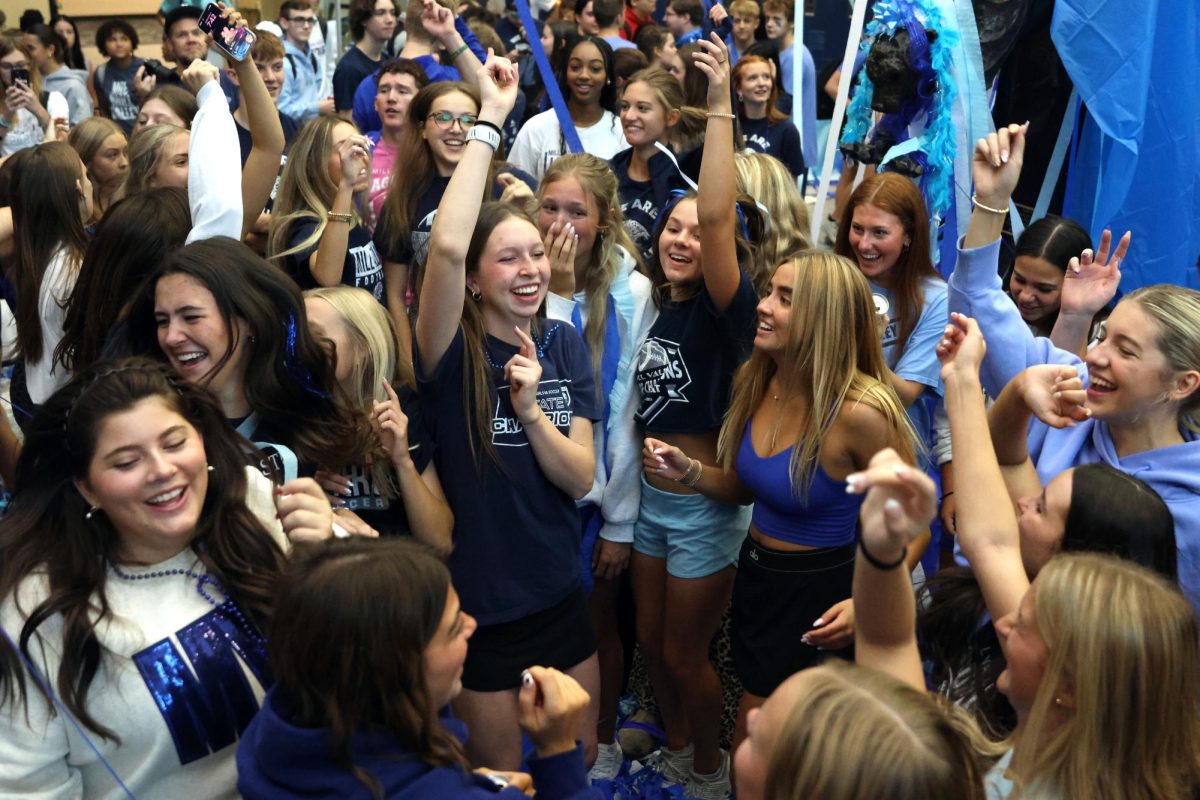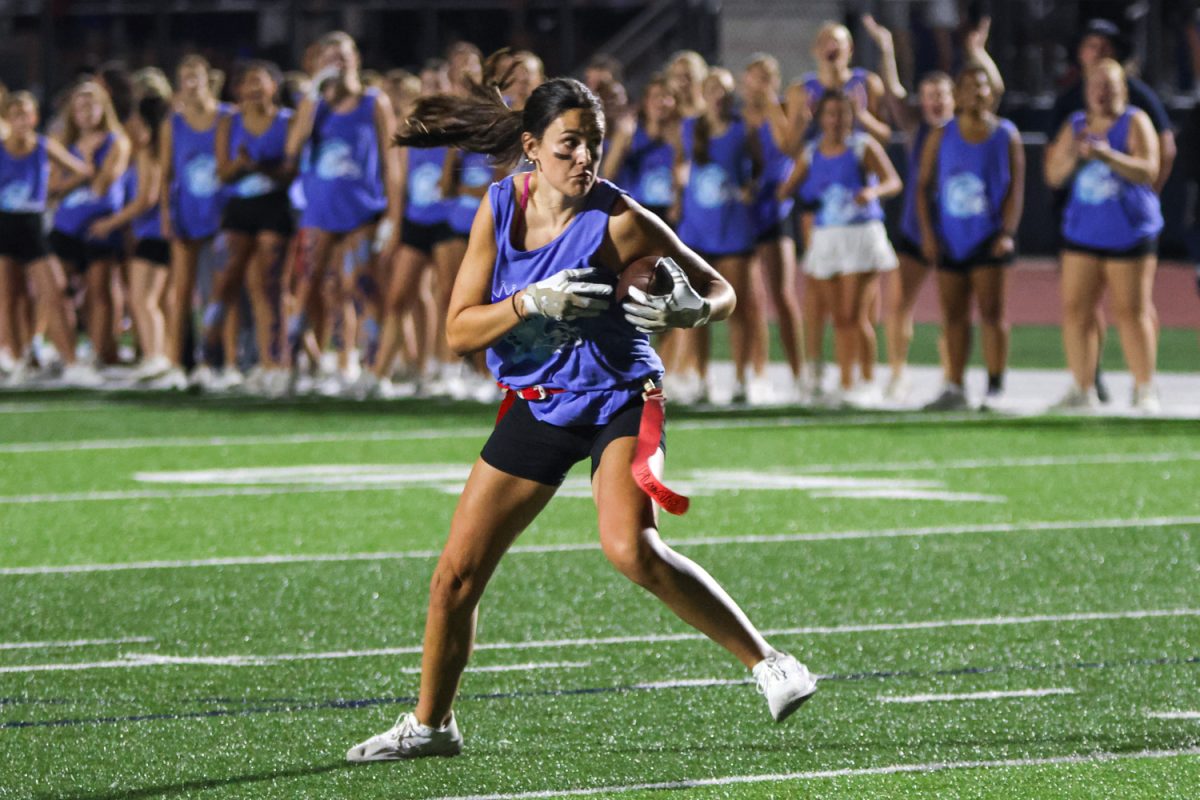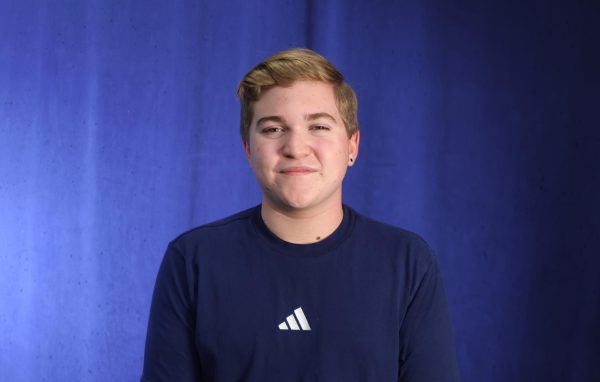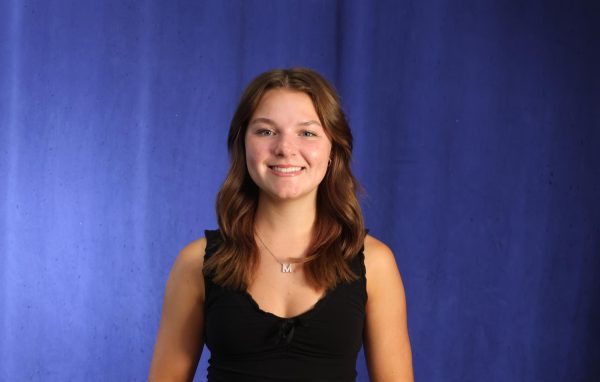MIRRORED DIVIDES
In recent years, there has been an increase in ideological divides among Americans. According to Pew Research Center, 88% of Americans feel there are strong conflicts between people of different political parties. This division often causes people to avoid talking about their beliefs.
Pew Research Center also found that 45% of people have avoided talking about politics with another person because of something they said about their beliefs. Scott Reinardy, interim dean of the William Allen White School of Journalism at KU, has observed this divide in his everyday life.
“We’re in an environment politically and socially where we pick our sides and say, ‘This is my side, and these are my people, and I’m never going anywhere,’” Reinardy said. “That’s unfortunate, because I have family members on the entire spectrum, politically, socially, and religiously. If we can’t engage with each other, we won’t solve problems and we won’t gain a better understanding.”
Division in the country is beginning to be mirrored at the school. Students, like sophomore Jack Moulin, feel that there are certain topics people avoid discussing because of others reactions.
“I feel like political topics are very tense,” Moulin said. “The political climate is very cutthroat nowadays. Certain opinions are seen by one side as terrible. I’d say some opinions are very shunned, so there is a no-go to talk about them.”

Freshman John Kiene feels similarly.
“I think [students are scared to] fight or disagree,” Kiene said. “There can definitely be discussions that are respectful, but I think [students] just want to stay out of a fight.”
While students may be afraid to voice their opinions, English teacher Victoria Byrd-Wright hopes that having discussions can combat these divides.
“The problem is that [students are] going to leave this building not agreeing with half of their country, so I think it’s important to have guided discussions in the classroom,” Byrd-Wright said. “That requires teaching them how to disagree and having a conversation where you’re both listening and you’re both hearing the other person rather than just talking at the other person.”
SUPPRESSED VIEWS
During classroom discussions, students tend to avoid public disagreement. Social studies teacher George Walden claims that this behavior is related to the societal pressures of fitting in.
“Kids have more opinions than ever, but don’t share their opinion,” Walden said. “I’ve been doing this for 20 years, and in the seven years of my political participation class, it’s gone down every single year. Kids don’t want to talk. They’re afraid of being ridiculed. I used to have more people on the fringes, and they strongly agree or strongly disagree. Now I have more middle because everybody just wants to fly under the radar.”
Junior Lexi Blaine agrees with this idea, noting that her peers tend to identify with the popular belief during classroom discussions.

“If somebody answers the question, the kids who agree with them will definitely say something. The kids who disagree don’t really say anything unless the teacher is like ‘Now somebody who disagrees has to speak,’” Blaine said.
One particular explanation for students being afraid to voice their contradicting opinions involves the fear of hurting someone. Kiene believes that there are some topics that should be left alone entirely.
“In general, if an issue is going to really hurt someone, you just agree to disagree,” Kiene said. “That’s the only time where you shouldn’t [discuss certain topics], but I think for the most part it’s perfectly acceptable to allow people to have their own opinions.”
Some students want to change the typical dynamic of structured interaction in the classroom. Freshman Chelyn Nielsen hopes to offer something with her beliefs in these talks.
“What makes me want to participate in classroom discussions is the fact that I get to inspire other people with my own personal opinion so that there’s more diversity in discussions,” Nielsen said.
SOCIAL STRAIN
Along with finding it hard to discuss and disagree with their peers during in class discussions, students also struggle to express their opinions within their own social groups.
Nielsen usually tries to avoid talking about controversial topics with her friends to prevent arguments.
“I try to keep it simple and peaceful, and I don’t try to argue with people because all of our opinions at the end of the day are based on our own personal views,” Nielsen said. “We can’t necessarily change how someone feels, but getting angry about it probably isn’t the best decision.”
While students may struggle to express their beliefs in person, Blaine believes social media can make people more confident in their opinions because they tend to repeat information they hear online.
“Social media comes into play with discussions because you can always hear things on social media, and a lot of people will believe them but you don’t know if it’s true or not,” Blaine said. “So when people say stuff they heard on social media, they have no way of confirming if it’s true or not.”
Walden has also seen the problem with biases on social media algorithms.

“We all have our own little algorithms and sets of facts that we’re reading and we’re hearing about,” Walden said. “The facts that I’m getting are different than yours. You might say something, I’d be like, ‘That’s stupid, because this is what my phone or my social media accounts are saying.’ It’s made having conversations hard.”
Byrd-Wright believes that social media has done a lot of harm to the way people debate.
“Getting angry is what’s most popular right now, and what gets the most clicks,” Byrd-Wright said. “I think that puts people more into their own echo chambers, so we’re much less willing to listen or concede on a point. I think that they don’t have good role models for watching people disagree because adults can’t do it, so how can we expect high schoolers to do the same?”
Walden agrees with this idea, explaining that the animosity of social media has made debating worse.
“It’s really easy to hide behind that screen and just be like ‘I hate whatever you’re thinking or whatever you’re talking about,’” Walden said. “[It’s] super easy to do that [online], whereas you wouldn’t do that to somebody to their face.”
AGREE TO DISAGREE?
In response to disagreements and a lack of discussion between people today, teachers and students are looking for solutions.
In her class, History teacher Tina Keith educates her students on strong discussion techniques to promote students to share opinions that are backed by facts rather than emotions.

“I talk to [students] about when you present [an argument] to always make sure that you present it as your opinion [and back] it up with statistics or research,” Keith said.
Similarly, Reinardy strives to create a classroom environment where students can disagree on topics but not feel personally attacked.
“[Students] don’t want to be judged [or] put into a box,” Reinardy said. “Nobody likes to be criticized, but the whole idea of [my] class is that we’re not criticizing the individual, we’re trying to have conversations about their ideas. Although you’re attached to an idea, it doesn’t mean that’s all you know. If you think you know something, that’s great, but there’s other people who know and think things that they can share that will provide a better understanding.”
While students can learn from one another, Moulin believes that on certain topics students may not be able to compromise on.
“Most things [one can] agree to disagree, but I think there are some ethical things that should not be compromised on [and] in general it is objectively wrong to have a negative opinion on that,” Moulin said.
When it does come to these disagreements on polarizing topics, Kiene focuses on using reason over emotion in order to avoid charged arguments.

“You can’t dip down to that level. You can’t get mad or get frustrated with them, because ultimately, that’s going to just put you off for the worse, and that’ll just help their argument. So just stay calm and try to be, try to use as much reason as possible with them,” Keine said.
On topics where one can agree to disagree, Blaine feels it is important to value others’ perspectives.
“I’m fine with disagreeing with people,” Blaine said. “I try to stay level headed with it because it’s another person. They can have their own beliefs, and they can agree and disagree with things, so trying to stay level headed is the best thing.”
Senior David Johnson also recognizes that he often disagrees with his peers but emphasizes being respectful towards their opinions as well.
“It’s really easy to disagree with people,” Johnson said. “If I disagree with somebody, I obviously have to back it up, but I don’t feel pressure to go along with the flow. If I do find an error, I’ll definitely voice it, but I’ll be kind about it because it’s an opinion and everybody has an opinion.”



